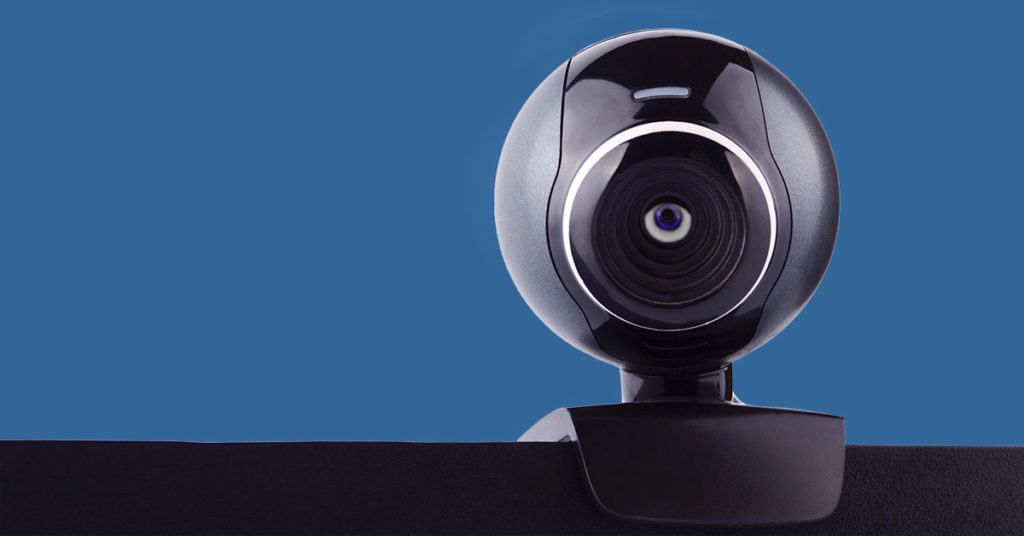
Choosing the Best Webcam for Your Needs
Whether you’re keeping in touch with friends and family, attending important work meetings or even going on dates, you’re spending a lot more time on video calls than you ever have before. By now you might have realized that the little camera built into your laptop can be kind of annoying. You have to keep adjusting your screen to stay in shot, the picture is poor and out of focus and, for group calls, the view is too tight to fit in your whole family.
The great news is that upgrading your web camera, or webcam, is simple. Every webcam works with a standard USB connection, which means you just have to plug it into your computer to get started. Whether you’ve got a PC or a Mac, your new camera will be recognized automatically and it’ll appear as an option in Zoom, Skype, Facebook or whatever other video chat software you’re using. Here’s what you need to know to find the best webcam for you.
Why buy a USB webcam?
Even if your laptop or PC has a built-in webcam, there are several reasons to consider buying an external USB camera:
- Built-in computer cameras can be awkwardly positioned. Nobody’s most flattering angle is from below. With a USB webcam, you can position it higher up so you look more natural.
- If you have a second screen, it’s hard to maintain eye contact with a laptop webcam. You can put a USB webcam in your line of sight so it doesn’t look like you’re constantly staring off into space.
- Some laptops have high-quality built-in webcams, but most have pretty mediocre ones. If you’re spending a lot of time video conferencing for work, for less than $100 you can significantly upgrade your Zoom camera setup and look a lot more professional.
- A USB webcam will often have a wider field of view (how much stuff is seen in the frame) than a built-in one. This means that if you’re trying to squeeze your whole family around the computer, you don’t have to put it too far away.
- If you’re shooting videos for YouTube or streaming video games on Twitch, a USB webcam can give you a second camera angle. While It’s not a necessary option most of the time, it can still be handy to have.
Features to look for
With all the specs and marketing material thrown around, it can be hard to tell which features really matter for a lot of tech. Here’s what to look for in a webcam:
Resolution and frame rate. The resolution is the size of the image the camera produces, while the frame rate is how many pictures (called frames) it records and sends every second. For most people, a full HD webcam that does 30 frames per second (you might see it listed as “30 fps”) is perfect. Full HD (often called “1080p”) is a high enough resolution that you get a great picture without a high price tag. You can get some 4K Ultra HD webcams now that have a picture that’s four times as large, and the price will go up, too. Also, unless the people you are video calling have huge, high-resolution screens, they won’t be able to notice a difference—and you’ll blow through a lot of extra bandwidth.
Autofocus. A good webcam will have built-in autofocus so it can keep everything looking sharp, even if you move around or hold something up to the camera.
Automatic picture correction. When you hop on a video call, you want your webcam to automatically make you look good. You don’t want to have to worry about different settings or whether a certain light is on. Good webcams will boast features like auto brightness, auto white balance or auto color correction that work quickly and reliably.
Viewing angle. The viewing angle is a measure of how big a field of view (FOV) the webcam has. Most have a FOV between around 70º and 80º. If you want to fit your whole family into the frame, look for something with a wider viewing angle, a bit closer to 90º.
Built-in microphone. The microphone built into your computer likely gives you subpar sound quality on video calls, so a webcam with a microphone can be a serious upgrade. It positions the mic away from the speakers and closer to your mouth. (However, even with a webcam with a microphone, for professional calls, use a pair of headphones to stop any chance of a feedback loop.)
Price. There’s no one best webcam for Zoom or Skype. Instead, there are lots of decent webcams available that could meet your needs, and you don’t have to break the bank to get one. Check out the highly-rated Logitech C920S. If you’re on a budget, you give up a little bit of image quality as you go cheaper. If you’ve got more money to spend, expect to get higher image resolution at faster frame rates. You also might see features like built-in ring lights. All nice to have—but certainly not essential.
Making the most of your webcam
With your shiny new webcam plugged in, here’s how to make the most of it:
- No webcam is good in low light. Make sure you’re set up in a well-lit space, preferably with the light source shining on your face, not from behind you. Use lamps or a window for light.
- Position your webcam at your eye level, if possible; it gives the most flattering picture. This might mean propping your screen up on a stand (or a few books).
- If you have a webcam with a microphone and still aren’t happy with the sound quality on your calls, try a USB microphone or a set of headphones with one built in. A webcam mic will be better than your computer mic, but it still isn’t ideal.
- Make sure to select your webcam in the options menu of whichever video-conferencing app you use. You don’t want to accidentally end up on a call using the lesser built-in webcam you just replaced.
Product features may have changed and are subject to change.


Join the conversation